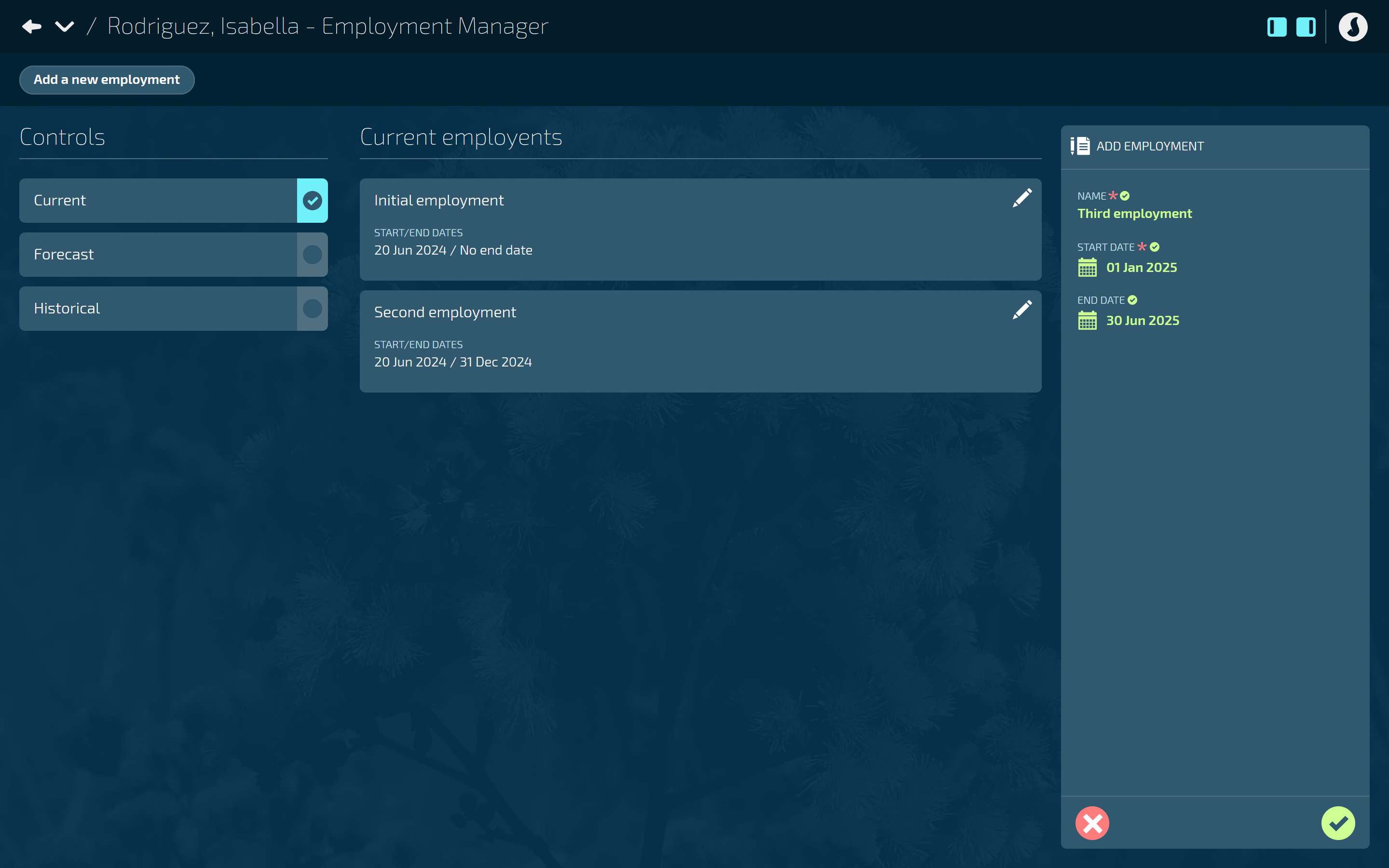Initial access and setup
Access to the Employment Manager where multiple employments are managed
For Jemini consultants and system administrators
Jemini consultants and system administrators typically handle user access to the Employment Manager. If you need access, please reach out to your consultant.
How to grant access to Multiple Employments
Navigating to the Employment Manager where multiple employments are managed
For HR managers and administrators
The HR managers or administrators responsible for managing employment records typically manage multiple employment data.
To maintain accurate multiple employment data, HR managers and administrators can add additional employments and occupancies to employees in the Employment Manager as needed.
How to navigate to the Employment Manager
Choosing the best configuration approach
The design of multiple employments in Jemini has two pathways
To create a new ‘Employment’.
Generally, you’d create a new employment when you’re engaging someone under multiple contracts, or re-engaging them under a new contract, and one or more of these apply:
They’ll receive separate payments for each employment through distinct payrolls or have different tax details from their other contract(s).
Their payroll related data, like KiwiSaver, Superannuation, Tax Details, and Bank Details, differ from their existing contract(s).
Their previous contract was terminated, and they’re starting a new contract at a later date.
To create a new ‘Employment Stream’ within an existing ‘Employment’.
In this case, a person may be taking on multiple part-time positions under one or more contracts, but their payroll information is fundamentally the same. These conditions would apply:
Their pay for each position will be consolidated and paid through the same payroll and have the same tax details as their other contract(s).
Their payroll related data, like KiwiSaver, Superannuation, Tax Details, and Bank Details, are shared across their existing contract(s) and not entered separately.
There’s an overlap or no gap between the end date of a previous contract and the start date of a new contract.
One of the key differences between the employment and the employment stream pathways is the way employee and payroll data is shared within those models for a single employee
Employments
The following employee data is shared across all employments and their associated employment streams. Any updates made to this data in one employment stream will automatically apply to all employment streams across all employments.
Employee Profile (excluding commencement date and service start date)
Contact Details, Health, Demographic, Emergency Contact
Employment Streams
Along with the employee profile details shared across employments, the following employee data is shared between employment streams within a single employment. Any updates to this data in one employment stream will automatically apply to all employment streams within that same employment. It won’t be updated in any employment stream within other employments.
Payroll (within the employee Occupancy)
Tax Details
KiwiSaver
Bank Accounts
Entitlement to Work
Payslip and Pay Mode (Consolidated)
TIP
Regardless of whether you’re creating a new employment or employment stream, the following employee data is unique and you’ll need to add the relevant details upon creation:
Pay Rate
Occupancy
Work Pattern
Learn more about each pathway below
Managing employees across multiple employments

In this scenario, an employee can have two different, separate contracts with the same organisation. These contracts represent distinct roles or positions. For example, imagine a university where a post-graduate student works part-time as the campus’s library assistant, while also working a casual role as a junior tutor. These are two separate employments attached to separate payrolls. Only their profile information will be duplicated, while their unique pay-related information in the Action bubble will need to be added. Because the employments are separate, they can resign from one role without affecting the other.
Refer to How to add, edit, and delete employments
Managing employees across multiple employment streams
.png)
In this scenario, an employee may hold multiple roles within the same contract, and these roles differ just enough to need separate employment streams. For example, imagine an employee who works as a customer support officer at a consulting firm. They also have a unique set of marketing skills that the company wants to leverage. While their customer support duties remain essential, the company assigns them part-time positions for each role, varying only in Occupancy (excluding Payroll), Pay Rate, and Work Pattern.